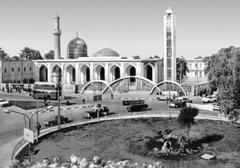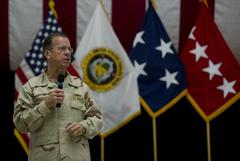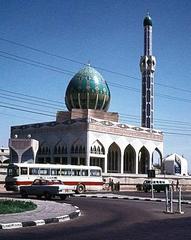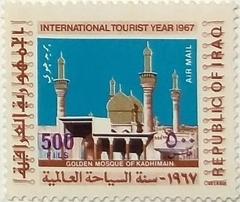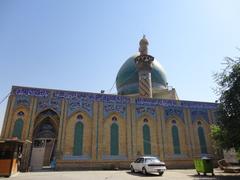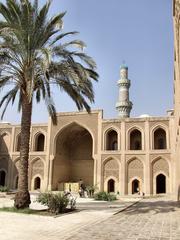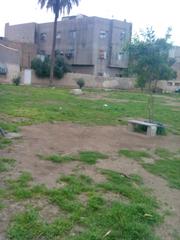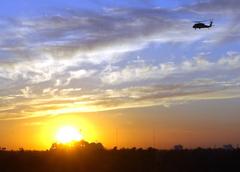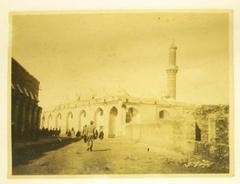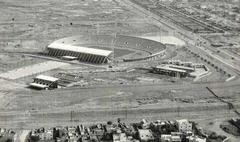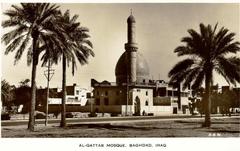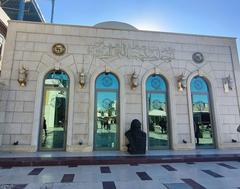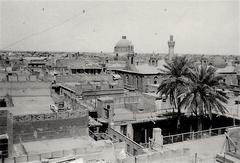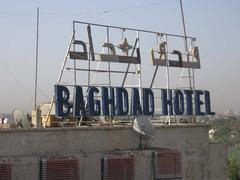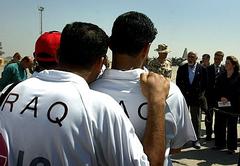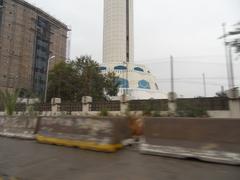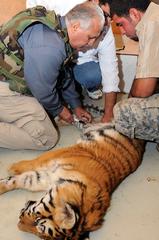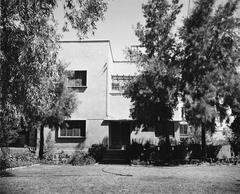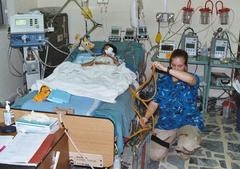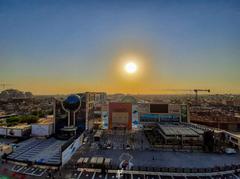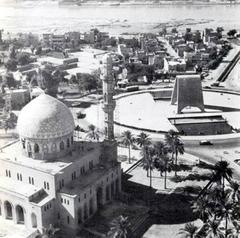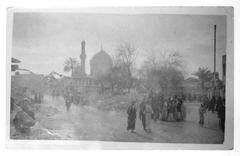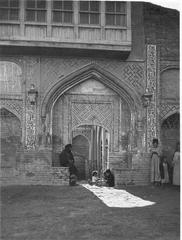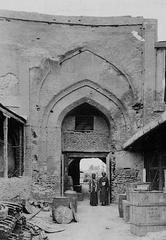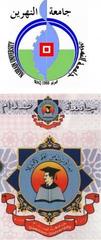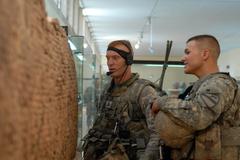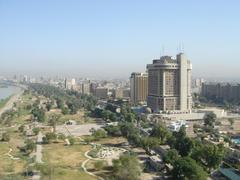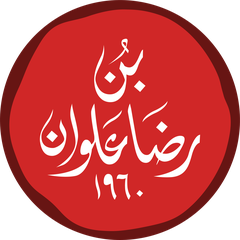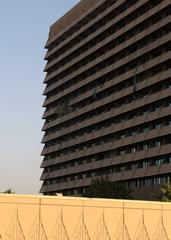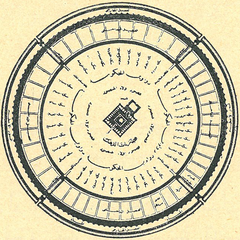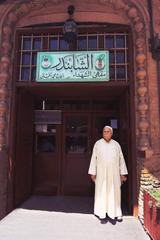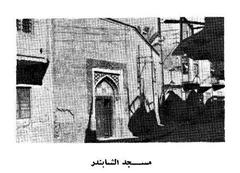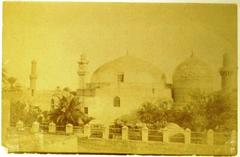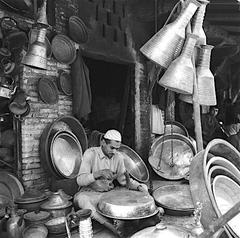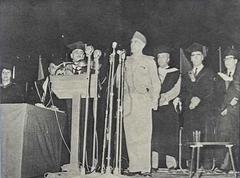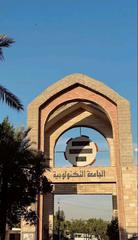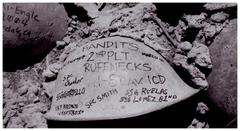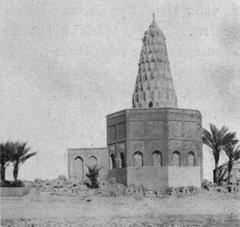Al-Shaheed Monument: Visiting Hours, Tickets, and Historical Significance in Baghdad
Date: 15/06/2025
Introduction
The Al-Shaheed Monument, widely known as the Martyr’s Monument, is a defining symbol of Baghdad and Iraq’s turbulent modern era. Rising from an artificial island on the east bank of the Tigris River, its split turquoise dome stands as a powerful testament to sacrifice, unity, and Iraq’s enduring cultural identity. Originally commissioned during the Iran-Iraq War and inaugurated in 1983, this architectural masterpiece was designed by Ismail Fatah al-Turk and architect Saman Kamal to honor the memory of hundreds of thousands of Iraqi soldiers who lost their lives in conflict (Atlas Obscura; Kurdistan Trips; Round City).
Over time, the monument’s meaning has broadened, representing the sacrifices of all Iraqi martyrs and serving as a locus for collective remembrance, reflection, and national pride (Round City). Its distinctive architecture fuses Islamic motifs with modernist sensibilities, and its location—readily accessible to the public—anchors it firmly within Baghdad’s urban and social landscape.
This detailed guide explores the historical context, architectural features, visitor information, cultural significance, and future prospects of the Al-Shaheed Monument, providing essential insights for travelers, historians, and cultural enthusiasts.
Historical Background and Cultural Significance
Origins and Purpose
The Al-Shaheed Monument was conceived at the height of the Iran-Iraq War (1980–1988), a period marked by immense national sacrifice and loss. Commissioned by Saddam Hussein’s government, it was part of a broader initiative to memorialize Iraq’s war dead through grand public works (Kurdistan Trips). Construction began in 1981, and the monument was inaugurated in 1983, intended to serve as a space for mourning and memory.
Evolving Symbolism
Though its original purpose was to honor the soldiers of the Iran-Iraq War, the monument’s symbolism has grown to encompass all Iraqi martyrs, reflecting the country’s ongoing struggles and aspirations for peace (Laure Wanders; Round City). Its abstraction—embodied by the split turquoise dome—allows for multiple interpretations, making it a vessel for evolving narratives of sacrifice and unity.
Cultural and Social Impact
The monument is a focal point for state ceremonies, public commemorations, and private acts of remembrance. Its grounds are not only a place of solemnity but also a green urban oasis for local families, blending sacred memory with daily life (Atlas Obscura).
Architectural Highlights and Site Layout
The Split Dome
The monument’s central feature is a 40-meter-tall dome split into two slightly offset halves. This visually dynamic form symbolizes both unity and division—core themes of martyrdom and national identity (ArchDaily; Wikipedia). Clad in vibrant turquoise ceramic tiles, the dome’s color evokes the Islamic and Abbasid heritage of Baghdad.
Platform and Setting
Set on a circular platform measuring approximately 190 meters in diameter, the monument rises from an artificial island surrounded by a tranquil lake, accessible via walkways and bridges (Archnet; Round City). The platform’s scale and openness create a contemplative environment and enhance the site’s visual prominence.
Materials and Construction
The dome is supported by a galvanized steel frame and clad with pre-cast carbon fiber-reinforced concrete panels and glazed ceramic tiles (Archnet; Architecture Lab). Its engineering involved international collaboration, with Ove Arup & Partners providing structural expertise and Mitsubishi Corporation serving as the main contractor.
Key Features
- Height: 40 meters (132 feet)
- Platform Diameter: 190 meters (623 feet)
- Materials: Steel, carbon fiber-reinforced concrete, turquoise ceramic tiles
- Symbolism: Split dome represents both sacrifice and rebirth (Wikipedia)
Water Features and Eternal Flame
One half of the dome shelters a reflecting pool, symbolizing the continuity of life and memory. The other half houses an eternal flame and the Iraqi flag, providing a perpetual tribute to martyrs (Rocky Road Travel; ArchDaily).
Underground Museum and Facilities
Beneath the platform lies a two-story underground complex, including:
- A museum with exhibits on the Iran-Iraq War and personal stories of the fallen (Young Pioneer Tours)
- Library and educational spaces
- Lecture hall, gallery, and basic visitor amenities (Archnet)
Visitor Information
Visiting Hours
The monument is generally open daily from 8:00 or 9:00 AM to 5:00 or 6:00 PM, with variations during holidays or special events. As of December 2023, the site is under restoration, with reopening expected around September 2025 (Atlas Obscura; Laure Wanders). Always confirm hours with local sources before visiting.
Tickets
A modest entrance fee of 3,000 Iraqi dinars (approx. $2 USD) is charged, payable on-site (Beyond the Bucket List). Museum access may occasionally carry a small additional fee.
Accessibility
The monument is designed to be accessible, with ramps and paved pathways for those with mobility needs. However, underground areas may be less accessible due to stairs.
How to Get There
- Location: East bank of the Tigris River, near the Army Canal, in the Rusafa district, Baghdad
- Transport: Easily reached by taxi, ride-hailing apps (such as Careem), or private car. Parking is available nearby.
Entry Requirements & Security
All foreign visitors must hold a valid Iraqi visa. Security protocols include identity checks and bag searches. Foreigners are typically required to visit with a licensed guide and pre-arranged permits due to security regulations (Unusual Traveler).
Facilities & Amenities
- Underground museum and gallery spaces
- Library and lecture hall
- Restrooms (bring own hygiene supplies; facilities are basic)
- No on-site food services—bring water and snacks
Guided Tours
Guided visits offer deeper insight into the monument’s history and symbolism. Arrange tours in advance through local operators or cultural organizations.
Visitor Experience and Practical Tips
- Best Times to Visit: October to April for cooler weather; early morning or late afternoon for optimal lighting and fewer crowds
- Dress Code: Modest attire required; women are not obligated to wear headscarves but may do so out of respect
- Photography: Permitted outdoors; restricted in some indoor areas—always ask before photographing people or sensitive locations
- Language: Arabic is primary; English-speaking guides are available
- Health & Safety: Register with your embassy, carry travel insurance, and avoid wandering outside the monument complex without a guide
Nearby Attractions
- National Museum of Iraq: Renowned for Mesopotamian artifacts (HelloTravel)
- Mutanabbi Street: Famous for bookstores and cultural life
- Baghdad Zoo and Al Zawra’a Dream Park: Family-friendly recreation (Unusual Traveler)
The Monument’s Role in Urban and Cultural Identity
Al-Shaheed Monument’s open access and location—close to universities and main roads—integrate it into the daily lives of Baghdad’s residents (Round City). Unlike other monuments restricted to officialdom, its public character has fostered widespread affection and acceptance.
The monument’s innovative design has influenced Iraqi architecture and public art, encouraging debates about memory, identity, and the role of monuments in shaping urban landscapes (Round City).
Preservation, Restoration, and Future Prospects
The monument has endured damage and neglect, particularly during the 2003 occupation when it was repurposed as a military barracks (Round City). Restoration is ongoing, with efforts focused on recovering lost elements and ensuring the site’s structural and symbolic integrity. Increased tourism presents opportunities for engagement and funding but also necessitates careful management to prevent deterioration (Beyond the Bucket List).
Frequently Asked Questions (FAQ)
What are the current visiting hours?
Generally 8:00 or 9:00 AM to 5:00 or 6:00 PM, but confirm locally—currently closed for restoration until around September 2025.
How much does it cost to visit?
Entrance fee is 3,000 Iraqi dinars (approx. $2 USD), paid at the entrance.
Is the monument accessible for people with disabilities?
Yes, most outdoor areas are accessible via ramps and paved paths; the underground museum may have limited accessibility.
Are guided tours available?
Yes, arrange in advance with local tour operators.
Can I take photographs?
Yes outdoors; indoors may have restrictions. Always ask permission.
Is it safe to visit?
Security is improved, but always check travel advisories, register with your embassy, and visit with a licensed guide.
Summary: Why Visit Al-Shaheed Monument?
The Al-Shaheed Monument is more than a landmark; it is a living symbol of Iraq’s history, resilience, and aspiration for unity. Its striking architecture, deep cultural significance, and accessibility make it a must-visit for those exploring Baghdad’s historical landscape. Whether you are a history enthusiast, architecture lover, or traveler seeking authentic encounters, the monument offers a profound, moving experience.
For the latest updates, restoration progress, and detailed travel tips, download the Audiala app, explore our related articles, and follow us on social media.
Visual and Interactive Resources
-
Images:
- “Al-Shaheed Monument split turquoise dome reflecting sunlight, Baghdad historical site”
- “Eternal flame housed between the split dome of Al-Shaheed Monument, symbolizing remembrance”
- “Artificial lake and circular platform surrounding Al-Shaheed Monument in Rusafa district”
-
Interactive Map: [Embed or link to an interactive map pinpointing the Al-Shaheed Monument location in Baghdad]
-
Virtual Tour: [Link to a virtual tour or 360-degree view, if available]
Sources and Further Reading
- Atlas Obscura
- Kurdistan Trips
- Round City Part I
- Round City Part II
- Archnet
- ArchDaily
- Young Pioneer Tours
- Unusual Traveler
- Beyond the Bucket List
- Travel Setu
- HelloTravel
